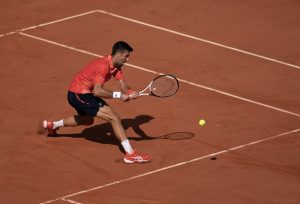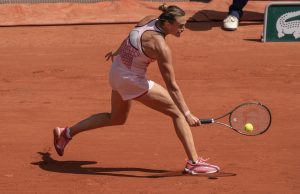On Tuesday the International Tennis Federation announced the introduction of the 25-second shot clock into every future Grand Slam. The shot clock was designed to speed up play and stop players from taking over the allotted time after a point, which was originally 20 seconds in Grand Slams before this new rule. This year in both the US Open qualifying and the ATP NextGen Finals in Milan, the shot clock was trialled. Given many felt the new implementation worked, it’s not surprising the ITF has latched onto introducing them into the biggest events in tennis. However, it’s not such a great idea and is implemented all wrong.
First things first, as mentioned, the time requirement between every point will be 25 seconds now. No matter if it’s a 60-shot rally or an ace, players are going to have 25 seconds before the server starts the next point. This will undoubtedly lead to some players taking the maximum time possible, even if the point ends with an ace or service winner. Imagine in a match between Ivo Karlovic and John Isner where the players are taking far longer in between points than usual just because they can. Many of you will be saying they could already take the maximum time and that’s true, but when a shot clock is glaring right in front of you counting down it’s only going to lead to fast-paced players being more inclined to take additional time than they usually would. Ultimately, whether the ATP and ITF like it or not, there are going to be times and matches where the rule slows down play.
Leading onto this, it’s going to lead to stupid warnings and penalties. What if one player averages 15 seconds between point,s yet crosses the 25 second mark a few times after long rallies; is that fair? Imagine his opponent averages 24 seconds but has never crosses the 25 second mark. It just doesn’t work; the ATP and ITF want to speed up play, yet they’re essentially penalizing the player who’s playing the faster tennis of the two. The server should be allowed to pace themselves at their own speed providing they don’t exceed an average of 25 seconds. (The average needs limits, of course; if a player takes ten seconds on each of six points, they can’t take two minutes before the next one.) This will allow for players to start points quickly after short rallies and be able to take the required time needed after grueling ones. Giving players the same amount of time after an ace and 60-shot rally is absolutely absurd.
A lot of top players, such as World #1 Rafael Nadal, have often been criticized for taking too much time between points. Often match statistics show the Spaniard having an average time between points of over 25 seconds, so perhaps there’s no wonder the 16-time Grand Slam champion is against the new rule saying “I think [the shot clock] is not possible for a great show. But if you don’t want a great show, of course it’s a great improvement.”(https://www.rte.ie/sport/tennis/2017/1121/921814-shot-clock-introduced-for-all-grand-slams/)
It’s hard to disagree with Nadal. For example, take the 2012 Australian Open Final against Novak Djokovic, one of the greatest Slam finals of all time, which was almost six hours long. If you tightly restricted both players to a set time between points, would we have got the great spectacle we did? In the last few sets it was evident both players took well over the allocated 20 seconds and sure, speeding up play is great, but if the shot clock is going to lead to two tired players completely dead point-in point-out, leading to unforced error after unforced error who wants to see that? I, for one, would rather have the closing sets of matches being of better quality if it means bending the rules a little. Given Grand Slams are best of five sets, it’s perhaps only a matter of time before we see many long matches turn into low quality state of affairs.
The shot clock no doubt has some benefits, but overall it just isn’t the correct implementation into the modern game. It should have always been the average time taken between points for a player; that way they can pace themselves depending on the previous point, while warnings and penalties can be given for a player abusing the rule overall and not just on a few occasions. Now that the rule is definitely going to be implemented, it’s going to be interesting to see what the ITF make of it in Grand Slam action and if they decide to alter it at any stage. There’s also the question of if the ATP will follow in the ITF’s footsteps and introduce it to their biggest events.






